French heirloom sewing is an exquisite tapestry of artistry and tradition, hailing from the heart of France. Rooted in timeless elegance, it weaves delicate threads of history, craftsmanship, and sentiment into each meticulously crafted piece.
This revered sewing style celebrates precision, where every hand-stitched detail becomes a testament to human artistry.
From lace insertion that adds texture and charm to intricate tucks and puffing techniques that create depth and dimension, French heirloom sewing is a canvas for creativity and devotion.
It’s an art form that finds its place in cherished garments, from christening gowns to wedding dresses, and in the delicate textiles of our homes, forging a timeless connection across generations.
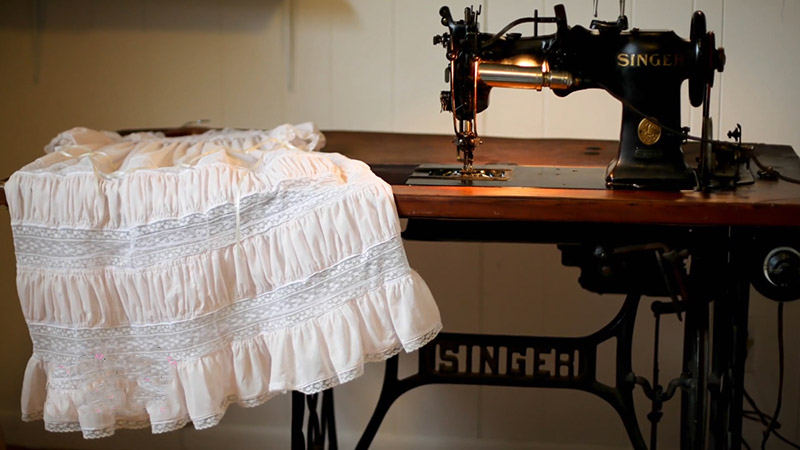
What Is French Heirloom Sewing?
French heirloom sewing is an intricate and revered craft originating from France, known for its meticulous handwork and use of fine materials to create timeless, elegant pieces. It relies on delicate hand stitching, lace insertion, tucks, puffing, and entredeux.
Delicate fabrics like batiste, lawn, organdy, Swiss voile, and fine linen are selected for their softness and durability.
This sewing style is applied to various projects, from christening gowns and wedding dresses to children’s clothing, baby gowns, lingerie, table linens, curtains, and accessories.
French heirloom sewing represents an enduring tradition of exceptional craftsmanship, producing cherished heirlooms passed down through generations for their timeless beauty and intricate detail.
Fundamental Techniques in French Heirloom Sewing
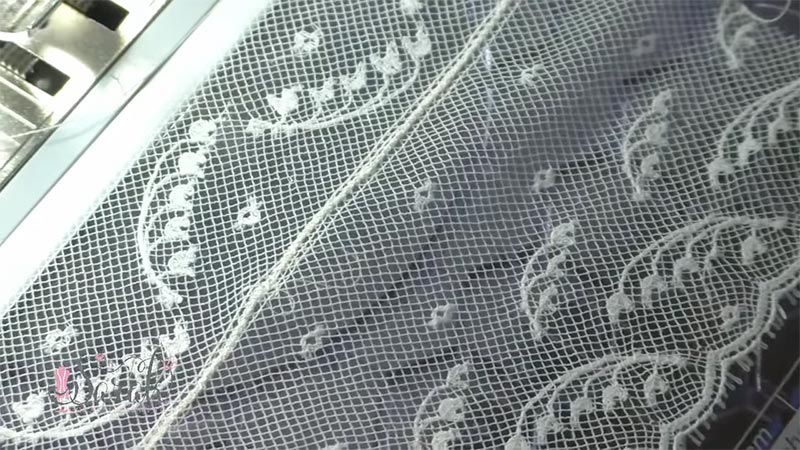
French heirloom sewing is characterized by intricate and delicate techniques that enhance the beauty and elegance of the final product.
Some of the key techniques in French heirloom sewing include:
Hand Stitching
Hand stitching is at the heart of French heirloom sewing. Artisans use hand-sewing techniques, such as hemstitching, fagoting, and decorative embroidery stitches.
These stitches are known for their precision and attention to detail, adding a unique, handcrafted quality to the sewing.
Lace Insertion
Lace insertion is a signature technique in French heirloom sewing. Delicate lace is carefully integrated into the fabric, often with hand-stitched precision. This creates a decorative and textured effect, enhancing the overall design of the garment or textile.
Tucks
Tucks are tiny, evenly-spaced wrinkles or folds in the fabric. French heirloom sewing strongly emphasizes creating tucks with precise measurements and even spacing. These tucks add depth and texture to the garment, giving it a refined and intricate appearance.
Puffing
Puffing is a technique that involves gathering or pleating small sections of fabric, often with delicate lace or ribbon inserted between the pleats. This creates a puffed or textured effect, adding dimension and visual interest to the fabric.
Puffing is commonly used in children’s clothing, particularly in baby gowns.
Entredeux
Entredeux is a narrow, decorative fabric or lace trim often used to combine two pieces of fabric. It serves both a functional and ornamental purpose, enhancing the overall design and adding a touch of elegance to the seams.
What Fabrics Are Commonly Used in French Heirloom Sewing?
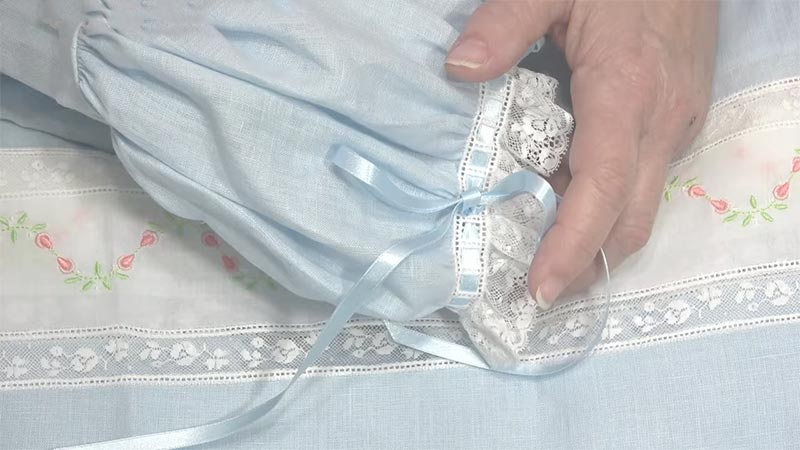
French heirloom sewing often involves fine and delicate fabrics that contribute to the overall elegance and refinement of the final product.
Some of the commonly used fabrics in French heirloom sewing include:
Batiste
Batiste is a lightweight, plain-weave cotton fabric known for its softness and fine texture. It’s famous for creating delicate and breathable garments, such as christening gowns, baby dresses, and lingerie.
Lawn
Lawn fabric is another lightweight cotton or cotton blend fabric. It is prized for its crisp, smooth finish and is often used in heirloom sewing to create elegant dresses, blouses, and other delicate garments.
Organdy
Organdy is a sheer, lightweight cotton fabric with a crisp, starched appearance. It is commonly used for collars, cuffs, and other embellishments in heirloom sewing because it holds intricate shapes and details.
Swiss Voile
Swiss voile is a lightweight, semi-sheer cotton fabric known for its softness and drape. It is frequently chosen for creating delicate, airy garments, including dresses, blouses, and children’s clothing.
Fine Linen
Fine linen is a natural fiber fabric prized for its smooth texture, breathability, and timeless appeal. It is used in heirloom sewing to create items like tablecloths, napkins, and fine household textiles.
What Types of Projects Are Suitable for French Heirloom Sewing?
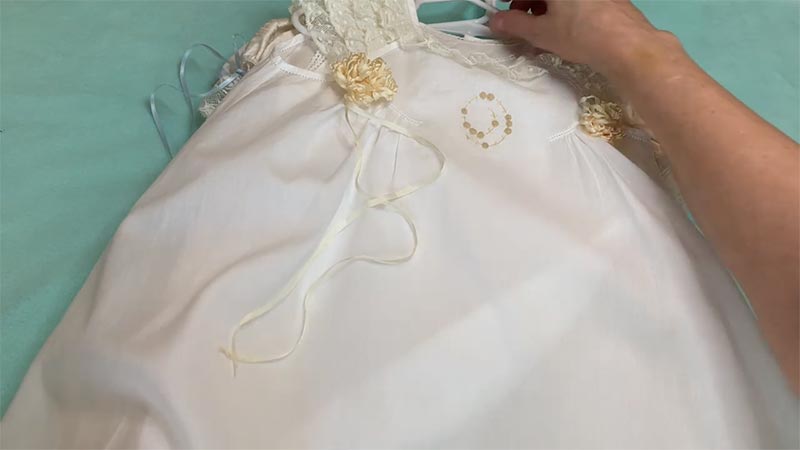
French heirloom sewing is a meticulous and delicate style often used to create elegant and timeless projects. Various types of projects are suitable for French heirloom sewing, including:
Christening Gowns
French heirloom sewing is particularly well-suited for crafting exquisite christening gowns. The fine fabrics, lace insertion, and delicate hand stitching can create a gown of exceptional beauty and significance for a baby’s baptism.
Wedding Dresses
Brides seeking a romantic and heirloom-quality wedding dress often turn to French heirloom sewing. This technique can create gowns with intricate lace details, delicate fabrics, and exquisite craftsmanship, making the wedding attire a cherished keepsake.
Children’s Clothing
French heirloom sewing is commonly used to make unique occasion clothing for children, including dresses, rompers, and suits. The delicate techniques and attention to detail result in beautiful, timeless outfits.
Baby Gowns
Heirloom-style baby gowns, often used for newborns and infants, showcase the puffing and lace insertion techniques of French heirloom sewing. These gowns become precious family heirlooms passed down through generations.
Lingerie
Delicate undergarments and lingerie can also benefit from French heirloom sewing. Delicate fabrics and lace are used to create intimate, beautiful, and comfortable apparel.
Table Linens
French heirloom sewing extends to home textiles, including tablecloths, napkins, and placemats. These linens feature decorative stitching, lace, and tucks, adding an elegant touch to formal dining settings.
Curtains
Delicate handwork can elevate curtains and draperies to create an atmosphere of timeless sophistication in a room. Lace insertion, hand-stitched hems, and other techniques are often applied to window treatments.
Bolster Pillows
Decorative pillows, such as bolster pillows, can be adorned with heirloom sewing techniques to enhance their elegance and charm.
Monogrammed Items
Personalized and monogrammed items, like handkerchiefs, baby blankets, or fine linens, often feature French heirloom sewing to create unique and cherished gifts.
Accessories
French heirloom sewing can be used for accessories such as handkerchiefs, lace collars, and delicate shawls, adding a touch of elegance to one’s attire.
Why Is French Heirloom Sewing Considered Timeless?
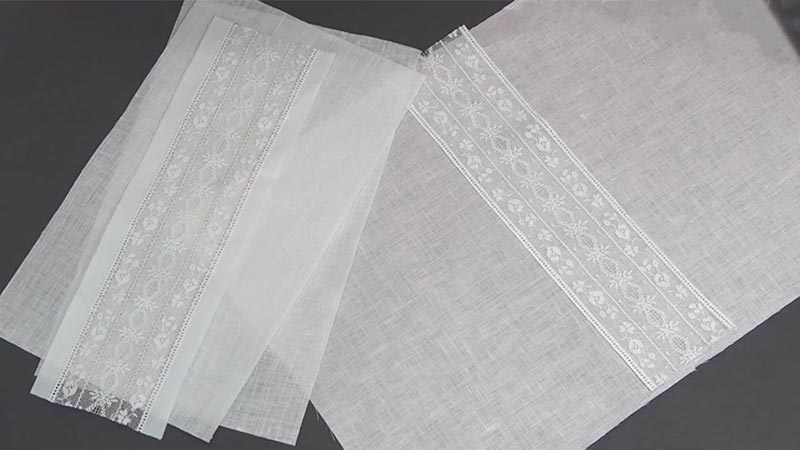
French heirloom sewing is celebrated as a timeless art form for several compelling reasons, rooted in its enduring elegance and the meticulous craftsmanship it entails.
Here’s why it is considered timeless:
Attention to Detail
French heirloom sewing is renowned for its meticulous attention to detail. Every stitch, pleat, and lace insertion is executed with precision, resulting in pieces that exude a level of craftsmanship and quality that transcends fashion trends.
Fine Fabrics
This sewing style relies on delicate and high-quality fabrics, such as batiste, organdy, and Swiss voile. These materials are soft and luxurious, and durable, standing the test of time and frequent use.
Intricate Techniques
Techniques like lace insertion, tucks, and puffing create visually captivating textures and dimensions. These artful techniques enhance the longevity and appeal of the garments and textiles.
Sentimental Value
Many pieces created using French heirloom sewing techniques, including christening gowns, wedding dresses, and baby gowns, hold profound sentimental value. These heirlooms are lovingly passed down through generations, making them a part of family history.
Timeless Aesthetic
French heirloom sewing produces classic and refined designs that remain immune to the ebbs and flows of fashion. The elegance of these pieces is enduring, appealing to those with a timeless fashion sensibility.
Versatility
French heirloom sewing is not confined to a specific type of project. It extends its influence to various items, from home textiles and accessories to clothing, ensuring its relevance and versatility.
Cultural Significance
French culture has a long history of valuing art, craftsmanship, and elegance. French heirloom sewing embodies these values, carrying cultural significance that transcends generations.
Dedication to Craftsmanship
The dedication to hand sewing and the preservation of traditional techniques keeps the spirit of craftsmanship alive. This dedication is integral to the timelessness of French heirloom sewing.
Emotional Connection
The sentimental value attached to French heirloom sewing projects fosters emotional connections. They often serve as bridges between generations, meaningfully connecting the past and present.
Sustainability
French heirloom sewing embraces sustainability in a world marked by fast fashion and disposable consumerism. Its creations are made to last, reducing the need for frequent replacements and minimizing environmental impact.
FAQs
Can beginners learn French heirloom sewing?
While intricate, beginners can learn and master French heirloom sewing techniques with practice and patience. Starting with simple projects is an excellent way to begin.
How do I get started with French heirloom sewing?
Getting started involves learning hand-sewing techniques, selecting fine fabrics, and practicing on smaller projects.
Is French heirloom sewing a cultural tradition?
Yes, French heirloom sewing is often passed down through generations and holds cultural significance in many families. It is cherished as a timeless tradition of craftsmanship and artistry.
How can I preserve and care for French heirloom sewing pieces?
To preserve these delicate pieces, store them in acid-free tissue paper away from direct sunlight. Wash your hands with care or seek professional cleaning if necessary.
Is French heirloom sewing suitable for modern fashion or more of a traditional craft?
French heirloom sewing can undoubtedly be adapted to modern fashion. Its timeless techniques can add a touch of elegance and sophistication to contemporary designs.
To Recap
French heirloom sewing transcends the mere act of stitching fabric; it embodies an enduring legacy of artistry, culture, and craftsmanship.
This time-honored tradition, originating from the heart of France, transforms delicate fabrics into elegant masterpieces.
With meticulous hand-stitching, lace insertion, tucks, puffing, and entredeux, it weaves a story of precision and attention to detail.
These creations are not merely garments, but heirlooms imbued with sentimental value and passed down through generations.
In a world of fleeting trends, French heirloom sewing stands as a symbol of timeless beauty, connecting the past to the present and reminding us that the most cherished things in life are often those crafted with love, care, and an unwavering commitment to excellence.
Leave a Reply